Symphytum officinale
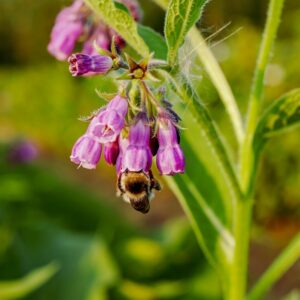
Common Names
Comfrey
Common Comfrey
True Comfrey
Knitbone
Boneset
Bruisewort
Consound
Slippery-root
Plant Family
Boraginaceae
Region of Origin
Native to Europe; cultivated especially in the United Kingdom and later in Asia, and much in North America in the 1600s.

WARNINGS:
Contains pyrrolizidine alkaloids
For external applications, apply to clean wounds only. There is debate about the cancer causing effects of this plant due to pyrrolizidine alkaloids present. It may cause liver damage, including liver cancer. Persons with a history of liver disease, alcoholism, or cancer should avoid this herb. Do not use during pregnancy or breastfeeding. Consult with a physician prior to using.
Parts Used
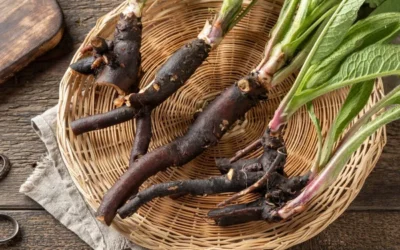
Roots
Harvested in autumn. Used in whole, chopped, or powdered form. Used in tinctures for acne. Roots are usually preferred for external treatments as they contain about twice the active ingredient allantoin.
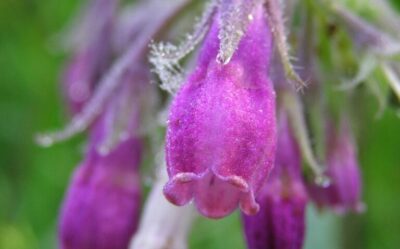
Flowers
Can be used in some tea preparations in low dose.
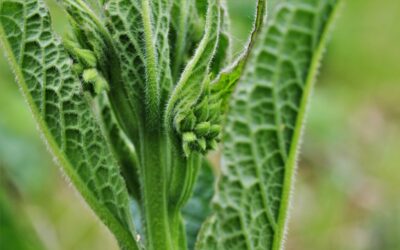
Leaves
Chopped leaves used for acne and boils; used to make ointments for bruises. Can be used in some tea preparations in low dose.
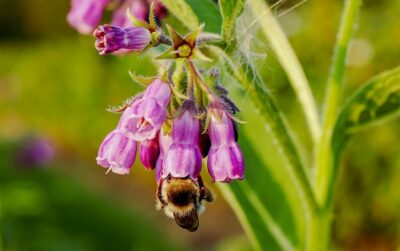
Growth Habit and Plant Characteristics
Can be propagated through crown division or root cuttings.
Perennial herb requiring little maintenance once established. Showy purple flowers make this ideal for pollinator gardens, as well as medicinal gardens. Symphytum officinale thrives in woodland gardens, containers, slopes, meadows, pondscapes, and cottage gardens.
Symphytum officinale grows to a height of 1 to 3 feet with a spread of 8 to 30 inches. The plant’s dark green basal leaves are long and lanceolate (lance-shaped) while the upper leaves are shorter. The leaves and stems are covered in coarse hairs, and its stems are winged. Its bell-shaped flowers in drooping clusters sprout on 2 to 3 foot stems. Symphytum officianle’s flower color is most recognized as purple, but depending on the variety, it can even be pink, blue, yellow, or white, blooming from late spring to early summer.
USDA Hardiness Zones 4 through 8.
Prefers full sun to partial shade.
Adaptable to most soils, but requires well draining soil and prefers a soil pH of 6.0 to 7.0.
MEDICINAL PARTS
Roots and aerial parts
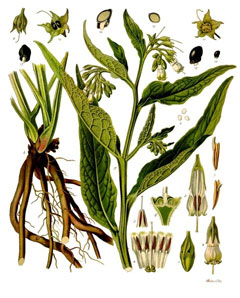
CULINARY PARTS
Flowers, leaves and roots.
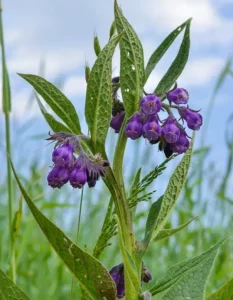

ENERGETICS AND TASTES
- Consectetur adiping elit
- Sed et turpis ullamcorper
- Molestie leo sodes metus
- Fusce luctus miet quis

TISSUE STATES
- Consectetur adiping elit
- Sed et turpis ullamcorper
- Molestie leo sodes metus
- Fusce luctus miet quis

ORGAN AFFINITIES AND CONDITIONS
- Consectetur adiping elit
- Sed et turpis ullamcorper
- Molestie leo sodes metus
- Fusce luctus miet quis
TRADITIONAL USES AND HERBAL ACTIONS
Teas, compresses, poultices.

COMPLIMENTARY HERBS
St John’s Wort, Arnica, Lavender, Aloe vera, Calendula
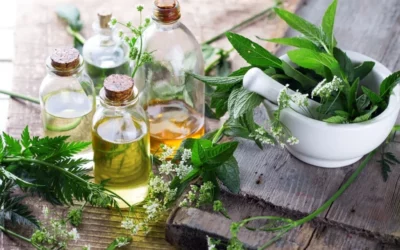
Prepare in food at your own risk.
Due to ongoing controversy around internal use of this plant, do your own research about cooking with Symphytum officinale.
Foods to Pair With
Mint, honey, breads, soups, and gravies.
Ethnic Cuisine Profiles
None found.
Common Cooking Techniques
Flowers and upper leaves for herbal teas or cooked greens, thicker leaves are used for making fritters, stems are cooked like asparagus, roots are sometimes roasted and ground to make a coffee substitute.

QUICK FACTS
- USDA Hardiness Zones 4 through 8.
- Full sun to partial shade.
- Soil pH of 6.0 to 7.0.
- Adaptable to most soils, but requires well draining soil.
Planting Guide
Plant Symphytum officinale seeds outside ¼ inch deep in a prepared bed or container about three weeks before your last frost. Symphytum officinale can also be propagated by root cuttings or crown division.
- Grows best in full to part sun in well draining, compost-rich soils that are kept moist; however, it will tolerate dry soils, as well as clay.
- Water moderately, allowing the soil to dry to a depth of 2 inches. When established, it can withstand periods of drought.
- A pH between 6.0 and 7.0 is ideal. Some afternoon shade is required when growing in regions with hot summers.
- Once planted, it can be difficult to eliminate because any root pieces left behind will grow.
PROBLEMS, PESTS, AND DISEASES

Heading Level 4
Symphytum officinale is rarely bothered by pests or diseases and is deer-resistant, however, slugs or snails may dine on the foliage.
It is considered invasive in the eastern U.S. Planting in containers can help diminish its rapid spread.
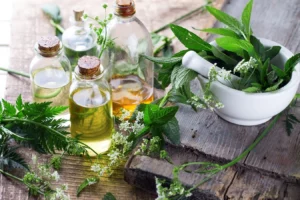
Making a tea by soaking Symphytum officianle leaves in water for at least a week makes a liquid fertilizer with a potassium content that benefits tomatoes and potatoes.
Formulas
Preparations and Doses
Blocks provide you with everything you need to build a larger page. They contain a variety of content elements, such as images, buttons, headings, and more. These elements are arranged in rows and columns, which provide a useful structure, as well as a sense of balance within the overall composition. You can modify this structure using our intuitive drag and drop interface, which allows you to rearrange content to your heart’s content.
In addition, certain elements will be centered on mobile devices and tablets and aligned to the left or right on a desktop display. You can adjust the layout for each Block at three different device widths – desktop, tablet, and mobile.
Common Uses
- Acne and boils
- Bruising
- Sprains
- Rashes
- Swelling
- Sixth
- Seventh
- Eighth
